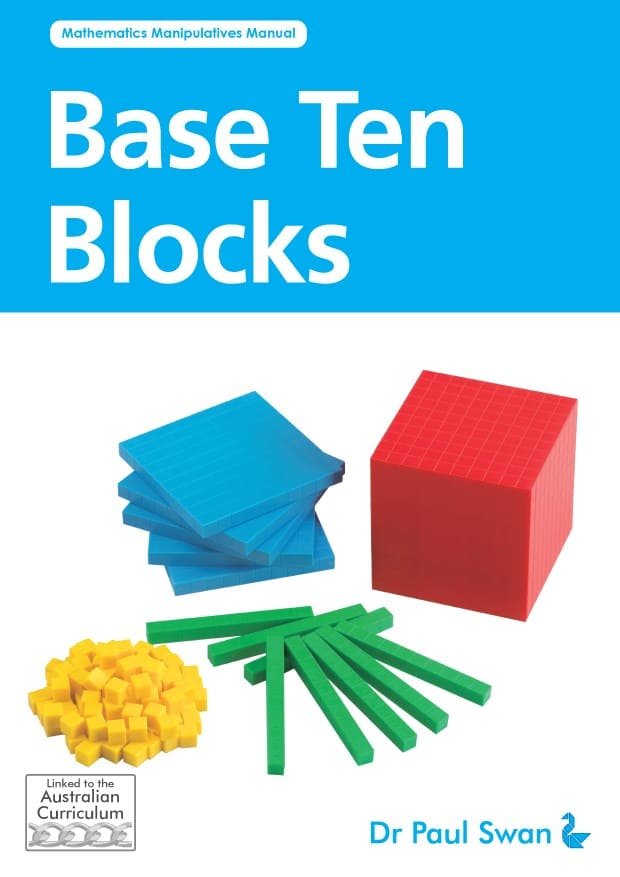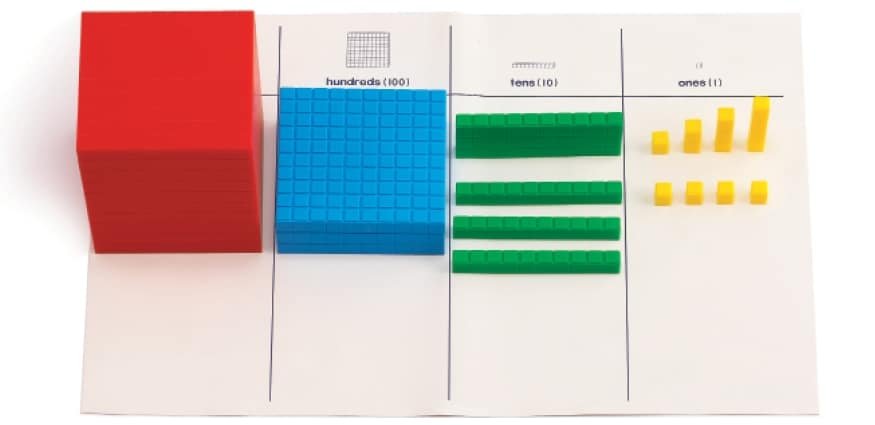• Number: Place Value, Operations (+, -, x, ÷)
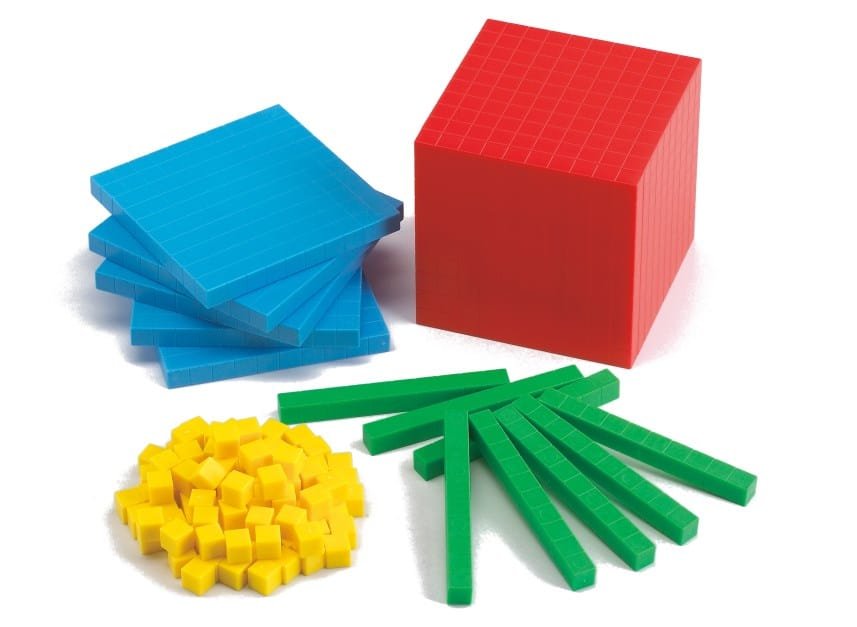
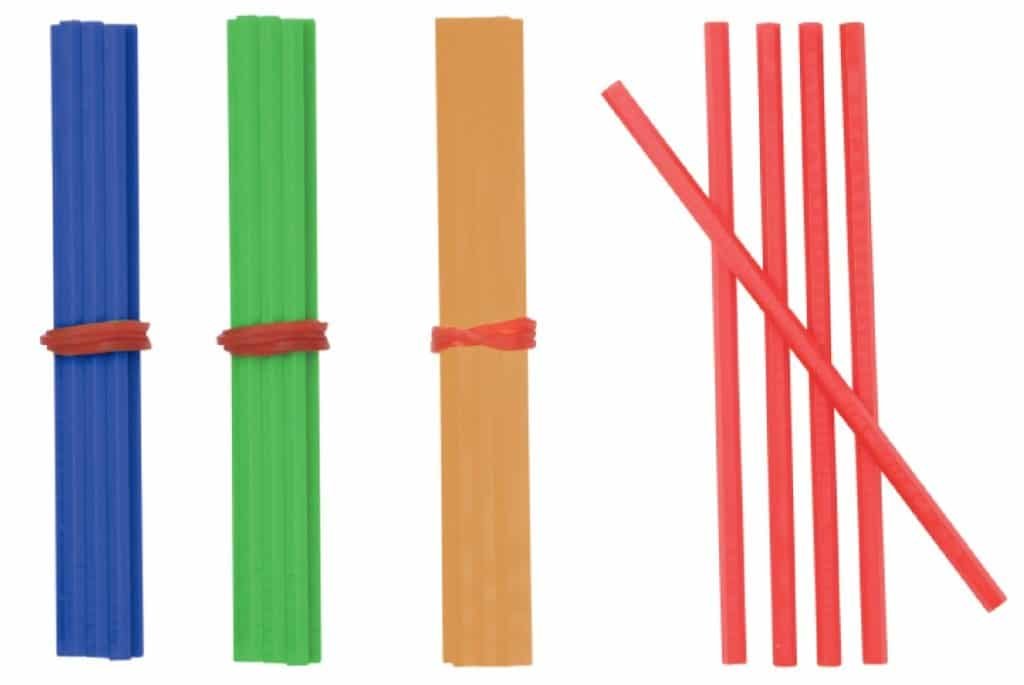
Technical Note:
Mathematical Language
Block, cube, flat, place value, rod, tens, hundreds, thousands, tens of thousands, hundreds of thousands, millions.
Using Base Ten Blocks
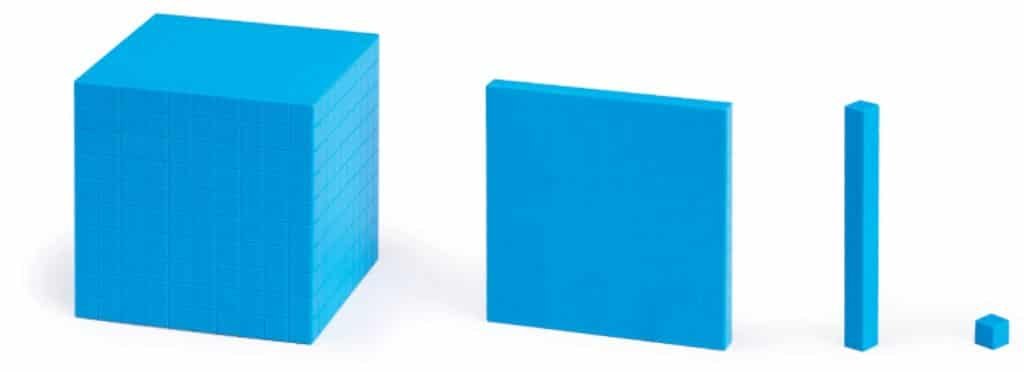
These relationships are designed to show the multiplicative nature of our base-ten system.
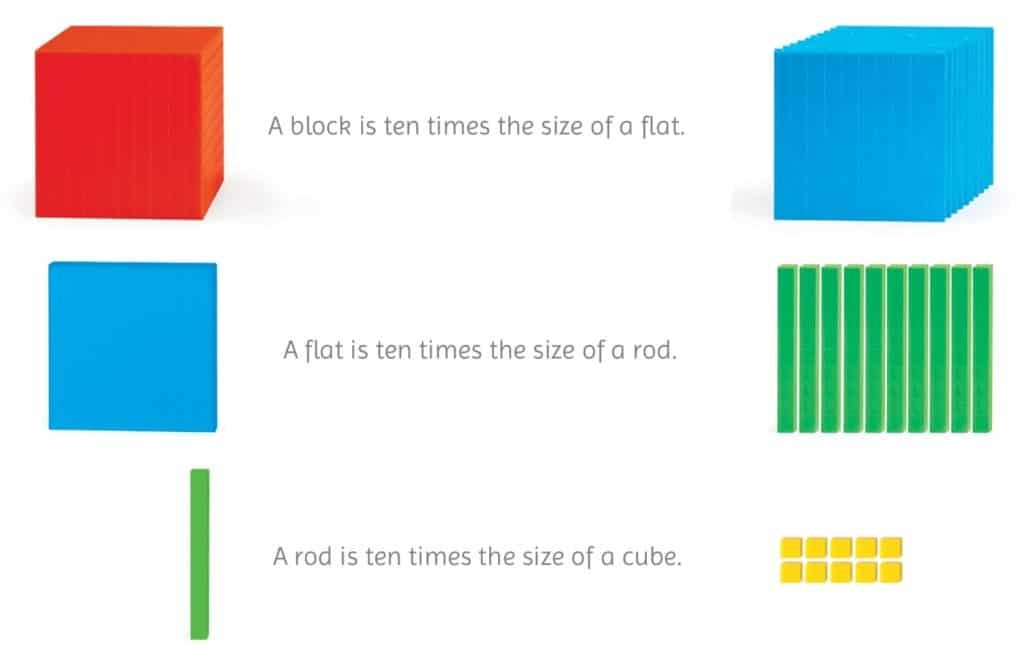
Base Ten Blocks are designed to help students understand place value.

This relationship helps students understand that 10 ones is 1 ten, 10 tens is 1 hundred and 10 hundreds is 1 thousand.
Rather than refer to the pieces as 1, 10, 100 and 1000, the terms unit (cube), rod, flat and cubes are used. Later, when students move from whole numbers to decimal fractions the values of the pieces may be renamed. If the flat is given a value of 1, then the rod would represent one-tenth or 0.1 and the unit cube would represent one-hundredth or 0.01.
Representing Numbers
Students need to be taught to represent numbers using the blocks. Thirty-seven is shown by setting out 3 rods and 7 units.

Adding Numbers
Forty-two may be added to 37 by combining the two sets of blocks.

Subtracting Numbers
Subtraction involves setting out the correct number of blocks and then removing some.
Fifty-seven take 23 would involve setting out blocks to represent 57 and then taking 23 blocks away. This would leave an answer of 34.

Typical Classroom Requirements
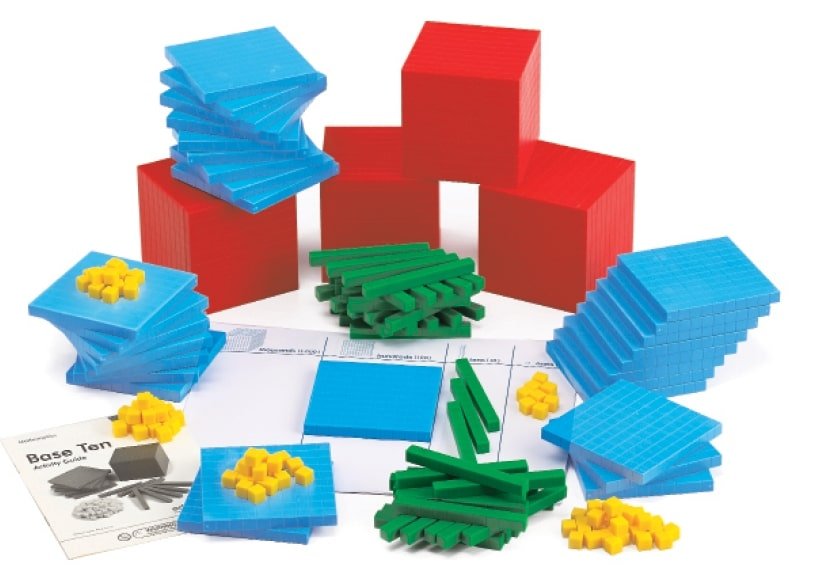
class sets:
Minimum:
500 unit, 50 rods, 50 flats, 4 cubes
Recommended:
1000 units, 100 rods, 100 flats, 6 cubes.

